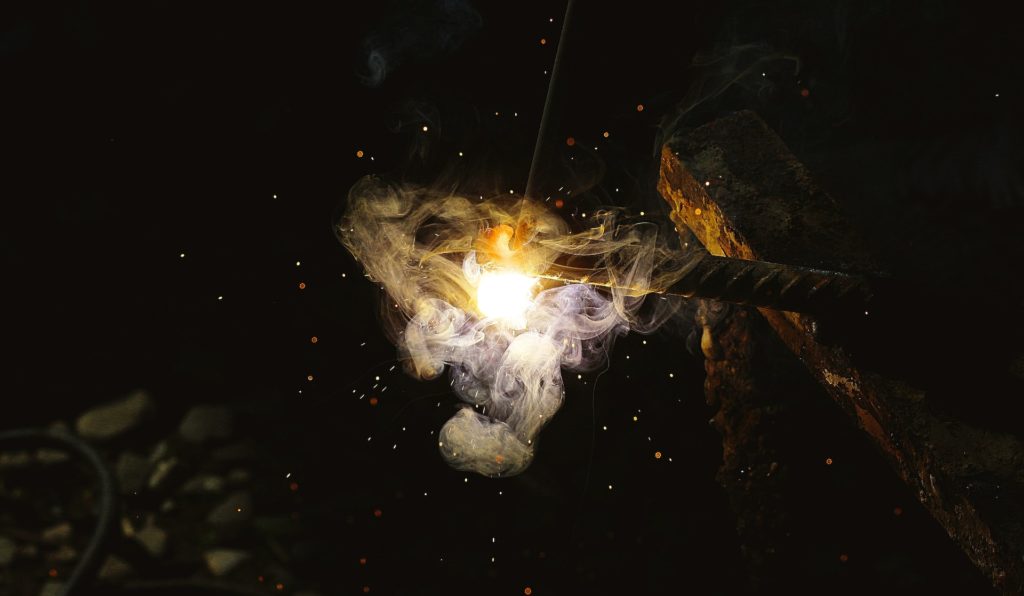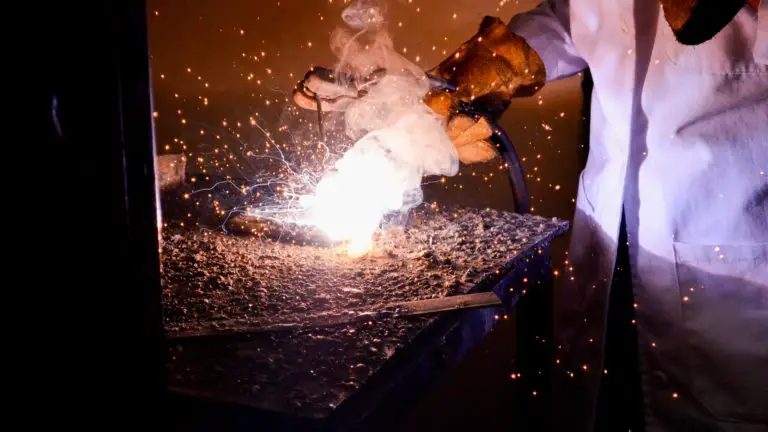If you’re a welder looking to weld floor pans, you probably wonder if flux core welding is the best option. Flux core welding is amongst the simplest welding processes available, making it ideal for beginners. If you’re wondering whether you can use this welding method for welding floor pans, you’re in luck. In this article, we’ll explore whether flux core is the best option for floor pan while answering any question about the flux core welding process. Without further ado, let’s dive right in.
Answer: Can You Weld Floor Pans with Flux Core?
In simple terms, yes and no.
Floor pans are usually made of thinner materials. Therefore, it’s best to apply caution regardless of your welding approach. However, the flux core welding method might be too complicated for floor pans. An expert welder might be able to use flux core welding for floor pans successfully, but for a beginner, it would be best to avoid it.
This is because welding floor pans with flux core will only end with a messy and frustrating result. You must be an excellent welder to weld thick stuff with flux welding. When using flux core for welding floor pans, it’s less about the machine and more about your welding skills.
If you’re a beginner, it’s best to start practicing on obsolete items, and when you get better, you can try welding floor pans with flux core. A tip to remember if you choose to weld floor plans with flux core is correctly adjusting the heat.
What Materials Can You Weld with Flux Core?
Flux core welding is a form of arc welding that uses continuous wire electrodes with a flux-filled core. It provides a shielding gas that protects the weld from various environmental contaminants. You can use it with a vast range of metals and some of which include:
- Carbon Steel: Most people use flux core to weld carbon steel because of its thickness. Although carbon steel mainly contains carbon, there are small amounts of sulfur, manganese, silicon, and phosphorus. You can use flux core to weld carbon steel in various ways, like during construction, shipbuilding, and automotive.
- Stainless Steel: Stainless steel is another form of steel you can weld with a flux core. This material is highly corrosion-resistant and contains at least 10% chromium. Although you can use flux core to weld stainless steel, you have to use a different wire than what is required for carbon steel because it requires higher levels of nickel and chromium to ensure corrosion resistance.
- Nickel Alloys: These metals contain high levels of nickel and elements like iron and chromium. They’re popular because of their impressive resistance to high temperatures and corrosion. Flux core welding is used to weld nickel alloys like Hastelloy, Monel, and Inconel.
- Aluminum: Aluminum is lightweight and commonly used in the automotive, construction, and aerospace industries. Although you can use a flux core to weld aluminum, it isn’t a popular option because a higher heat level and a precise type of flux are required.
It’s important to note that various flux core wires are designed for multiple materials. Therefore, it’s essential to choose the suitable wire for the job at hand. Additionally, different welding machines could require various flux core wires.
Can a Flux Core Welder Weld Steel?
The simple answer to that is yes. Flux core welding is commonly used for welding steel in various industries like automotive and construction. Steel is also among the most popular materials welded using flux core welding. However, welding steel with a flux core requires a flux core wire with a flux-filled core. This would effectively create a shielding gas to protect welds from atmospheric contamination.
Additionally, the flux will create a slag to protect the weld as it cools. Most people prefer flux core welding for welding steel because it is a relatively easy process. You can also use it outdoors and in windy conditions where other welding processes are unsuitable.
Can I Use Flux Core Wire to Weld Body Panels?
Although it’s possible to use flux core wire to weld body panels, we don’t recommend it. Flux core welding tends to generate lots of heat and spatter, which could damage thin metals. It could also create some distortions in the panel. Additionally, flux core welding can leave slag behind, which could be difficult to remove, resulting in rusting in the future.
It’s best to use a MIG welder for body panel welding. This will produce a cleaner weld where there’s less heat and spatter. It also reduces the risk of damage to the panel. MIG welding with solid wire and shielding gas is ideal for welding thin metal because there’s less distortion and post-weld cleanup to worry about.

How Thick of Metal Can You Weld with Flux Core?
The flux core welding process is versatile; you can use it on metals with varying thickness levels. You can use some factors to determine the thickness of metal to weld with a flux core. These factors include the type of flux core wire and its diameter. The welding amperage and joint design are also necessary when determining the thickness of metal you can weld with a flux core.
A general rule of thumb is using flux core welding to weld metal between 18 gauge and 1 inch thick. Thicker materials require multiple passes. Some flux core wires are designed for thick materials, while others are designed for thin materials.
Are Flux Core Welds Strong?
Yes, flux core welds can be strong when you do it right. The strength of flux core welding usually depends on the joint design, welding parameters, and type of wire used. It can, however, produce high-quality welds that are strong and durable, which is why it is a popular welding process in various industries.
Is Flux Core Welding as Strong as Stick Welding?
Flux core and stick welding are welding methods that could create strong and durable welds. The strength of the welds usually depends on the type of electrode or flux core wire used, the joint design, and welding restrictions.
Stick welding is known for producing strong and reliable welds, especially in structural applications. It uses a consumable electrode coated with a flux that removes impurities from the weld and provides a shielding gas.
On the other hand, a flux core weld uses a continuously fed wire with a flux-filled core to create a shielding gas that protects the weld from atmospheric conditions. It can produce high-quality welds that are strong and durable. Unlike other welding processes, it is also great for welding in outdoor and windy conditions. The choice between stick and flux core welding usually depends on the welder’s expertise and the specific application.
Is MIG Welding Better than Flux Core?
MIG welding is a better option for floor pan welding than flux core. It will ensure clean and nice welds. Additionally, it only produces a small amount of slag on the metal surface, unlike flux core welding, which requires a lot of after-weld cleanups.
Although there might be a need for grinding to clean the pan before welding, MIG welding will reduce the stress of welding. It is also a better option than flux core because it works faster. MIG welding will reduce the lead time, also causing the overall cost to drop.
Conclusion
If you were wondering if you could weld floor pans with flux core, I hope this article gives you a better understanding. It is kind of a complicated process. Therefore, practice before welding the floor pan with a flux core. Alternatively, you can opt for MIG welding to ensure a cleaner weld and save time.


Add comment